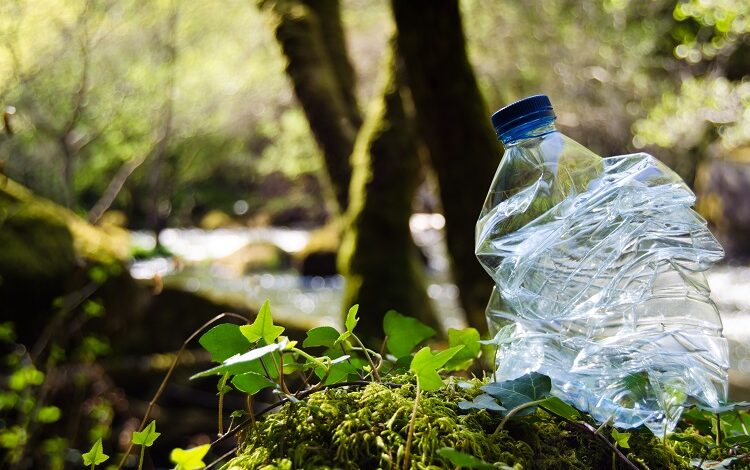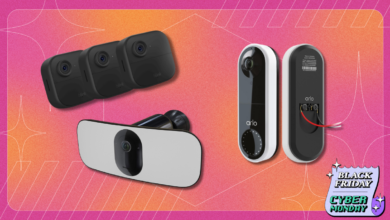Packaging that composts at ambient temperatures aims to make litter disappear

While recycling regimes have seen some success in encouraging consumers to dispose of food and beverage packaging in a sustainable way, litter is still a significant problem.
But what if litter composted in a matter of weeks, rather than sticking around for hundreds of years?
Spanish start-up Pack2Earth has developed biobased packaging that composts naturally at an ambient temperature, leaving little trace.
The start-up, which produces flexible film from biopolyesters and cellulose, and injection material (plastic which can be injected into a mould) from a PHA plastic and other mineral additives, has created a material that won’t, unlike many forms of litter, remain longer than a few months.
How does Pack2Earth’s product reduce litter?
The company was setup after co-founders Françoise de Valera and Glenn Du Pree, trail runners at the time, found the countryside littered with packaging from sports products. They wished that this packaging were not so permanent.
“We would never, ever, ever encourage anyone to throw anything in the countryside, even if it composts,” de Valera told FoodNavigator. “But we know that people are going to do it anyway, so we wanted to make sure that it would disappear and not hang around for 400 years.
“We originally thought that we would be able to buy a material for that purpose and use it on our products. And then we realised that it didn’t exist for long life products, particularly for semi-liquids, like energy gels, or liquids.”
Pack2Earth’s flexible film composts in around 11 months, while products made with its injection material compost in a mere four months.
Importantly, it does not leave toxins in the soil when it composts. In fact, it is because it composts that the material “can’t leave any toxins in the soil at the at the end of the composting process,” de Valera told us.
“One of the tests that they do to make sure that’s the case is to plant new plants in the soil that results from the composting process and make sure they’re healthy plants.”
EU to ban Bisphenol A
Last year, the EU parliament agreed to ban Bisphenol A, a chemical that is used in food-contact packaging and can make it into foods, in food packaging by 2026. It has been identified as a health risk, for example leading to higher risk of reduced fertility, endocrine disruption (which alters how hormones function) and eye damage.
Last year, the European Food Standards Agency (EFSA) reduced the tolerable intake of Bisphenol A, and the European Environment Agency (EEA) found that it is being consumed at above acceptable levels within 11 European countries.
As well as reducing litter, the material also has the potential to reduce landfill. For example, when a recyclable plastic product is sent for recycling, products which still have food stuck to them may be sent to landfill instead, as they won’t be able to be recycled. This is not the case for Pack2Earth’s product.
“In the case of our material, it’s not a problem because it all composts together,” de Valera told us.
How does Pack2Earth differ from other biobased plastics?
A range of biobased plastics are already on the market (such as, for example, one based on milk proteins). How does Pack2Earth differ from its competitors?
According to de Velera, the unique property of the company’s product is its ability to get long shelf-lives for semi-liquids and liquids.
“We have the only materials that are available at the moment that compost at ambient temperature that are biobased and that can be used to package long life products, whether they’re dry, semi-liquid or liquid.
“So particularly, no one else out there can package the semi-liquids or the liquids and get a long shelf life. And we’re getting [a] shelf life of over 12 months.”
Furthermore, she told us, with the company’s material, one does not need to use different machinery – the same machinery can be used as with fossil-based plastic.
Some objects made with the company’s injection material, such as cups, can be reused in an industrial dishwasher up to 200 times.
Can the production of the material be upscaled?
Pack2Earth licenses its material to larger manufacturers. These manufacturers, with an abundance of machinery, are able to use it at scale.
“There’s no limit on the supply of the key ingredients that are needed for our formulations, and there’s no limit on the machinery. Because it’s really the machinery that’s already in existence [we need] to produce plastic at a large scale,” de Valera told us.
Investors into the company include snacking multinational Mondelēz International, which plans to use Pack2Earth materials in its products. It has also received an order from Spanish fish company Angulas Aguinaga.
Edible packaging
Alongside biobased packaging, another solution to the packaging problem is edible packaging. Alt-packaging start-up Notpla, for example, has developed packaging based on seaweed, which if not consumed can biodegrade in six weeks. UK start-up Stroodles is replacing tableware with pasta as well as plates and bowels with wheat bran. And Cambridge University spin-off Zampla has developed edible packaging for stock cubes.
Pack2Earth provides the materials necessary for companies such as this to produce products at scale. “What we do is we specialise in the providing the materials. [It’s] the packaging manufacturers who make the different kinds of packaging.
“They might make sachets or doy packs or pouches, or whatever it is they need. With our injection material you can inject things like injected trays for fresh meat and then you can seal a film to the top of it to make a film lid for that tray.” The material can be injected into knives, forks, bowels or even, in theory, car parts.
There are a few limitations of the product. For example, it can’t currently be pasteurised (meaning it can’t be dipped in 100°C boiling water).
It also cannot currently make thermal moulding trays, but Pack2Earth is currently developing a form of its injection material that could create these.



